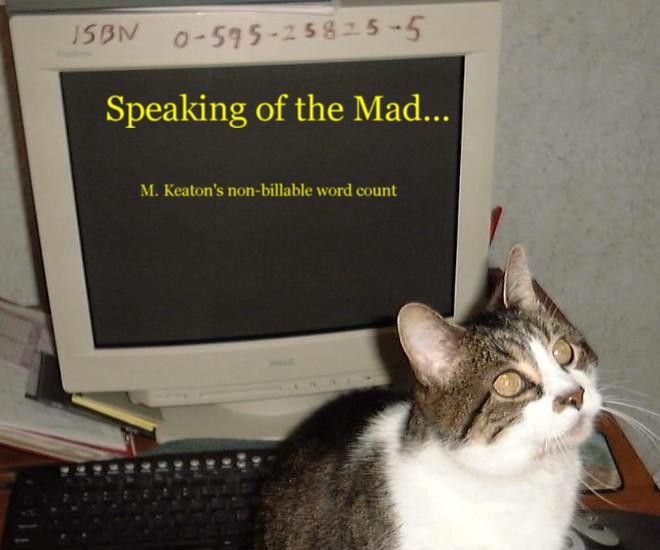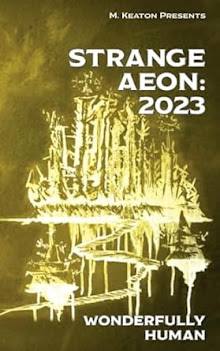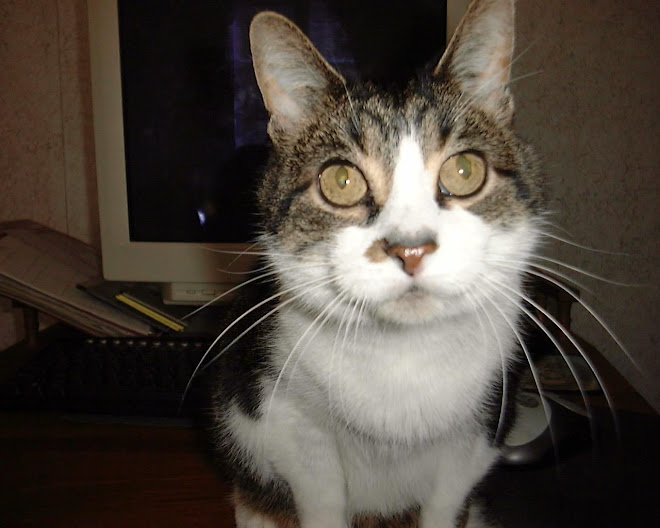And here's the interview for Calamity's Child.
An Interview with the Author of Calamity's Child
Q: How'd it all get started?
A: Originally, there was no Calamity's Child; there was only a short story. In fact, before there was a short story, there were two authors at a convention...
I had known John Scalzi for a few years previously. Old Man's War had only recently come out and he was gearing up to edit a special edition of Subterranean. It was to be a theme edition and he chose sci-fi clichés. All the old, ugly, beaten-to-death ideas that filled every submission guideline under the heading of "Do not send us this", but done right. He asked if I'd send something in and, after a bit of noodling, I came up with Subject Real. Its cliché was one of my own pet peeves—the holodeck episode. (If a machine messed up half as often for no more benefit than various incarnations of VR in sci-fi, then we'd lynch the inventor and outlaw the premise. My challenge was to make the risks of the technology worthwhile; I vent a bit of my own opinion when Ivan insists that anyone trapped in VR deserves to stay there.)
In the end, the story didn't fit the issue. John tracked me down the next time we were in the same building and made sure I knew it was a matter of making the issue consistent in tone (he opted for more hard sci-fi than space opera); he was quite happy with the story. (John's a class act that way and he doesn't blow smoke. If he'd disliked it, he'd have told me that too. I'd expect no less and I respect him for it.) To digress a bit, it is ironic that,in the Foreword to the book, the editor compares Calamity's Child to Scalzi's work (as well as Mike Resnick's).
I shopped the story a bit but, as most RGR (Ray Gun Revival) readers know, space opera is not a sellers market (though, with the benefit of hindsight, I probably could have sold it to Jim Baen’s Universe). To shorten a long story a bit, a reader of mine pointed me at RGR and asked if I'd send something over. I sent Subject Real and overall, I think everyone was happy.
Several months passed and I didn't give the matter much thought, but I kept getting mail asking where the rest of the story was—the object real part. Roughly parallel to this, timewise, I pitched a serial to RGR (“FT7" for those who've read the slush). That story didn't go, but out of the ensuing give and take emerged Calamity's Child.
Q: After Speakers and Kings, why space opera?
A: Timing mostly. I had actually started work on two other books—one epic fantasy, the other military sci-fi, also on an epic scope—when RGR (and Double-Edged Publishing) picked up the pitch for Calamity's Child. In addition, after S&K, I felt that I needed to do more work on character development and character-driven stories.
Q: You're happy with the characters in Calamity's Child?
A: I am. One of my biggest worries was Kylee herself. I was really worried over whether I could present a teenage girl accurately—that split between little girl and grown woman at the same time. Plus, she has a good deal of other problems mixed in as well. I worried that, in presenting her baggage in addition to the 'normal' behaviors of that age, she might come across as forced. As it is, I've had a couple of early readers tell me that I hit it spot on.
Q: Why write space opera at all? It's not exactly a hot commodity with publishers these days.
A: More's the pity, assuming it's true and I'm not so certain it is. I am sure that the reading public has an appetite for it.
To understand space opera, you have to understand the history of the entire genre. First, space opera is part of a larger block of literature: the literature of the frontier. It includes space opera, westerns, H. Rider Haggard, Joseph Conrad, Rudyard Kipling, and a host of others. With the recent success of shows like Firefly, a lot of people have the misconception that space opera is westerns in space—Bat Durstans—but it's a lot more that that. It's the literature of man on the edge, away from 'civilization' and truly free. To paraphrase Kipling, it's where a man must be who he is and do what he must.
The one great defining theme of all these works is loyalty, with honor and duty vying for second. I believe that, while these themes may go out of vogue with publishers, they will always have a place with readers.
As for space opera specifically, it all began with the pulps. Most readers and almost every writer fondly remembers a childhood diet of Doc Savage, Tarzan, John Carter, the Lensmen, and Tom Swift or their equivalents. You have to ask yourself why. The pulps were the gateway to science fiction, the entry-level books. They were clean and simple. You could enjoy them without an extensive knowledge of the genre or literary theory and the science involved didn't stand in the way of seeing the story. Many were poorly written, but there was always an earnest energy to the writing and a feeling of mutual enjoyment between the author and the reader. The honest enthusiasm, straightforward presentation, and sheer fun of the books hooked more people on reading, and on reading science fiction specifically, than all the fancier, 'better' books around at the same time. More importantly, without these books—these much-maligned pulps—the 'better' books would never have been read at all, because it's the pulps that suck you in. Come for the gunfight, stay for the show.
Somewhere along the way, we lost a lot of that. Science fiction talked about itself and to itself more and more often. As it did so, the reader base dwindled. That's not an accident. You have to start reading somewhere; it's unrealistic to assume that the average reader is going to jump straight into the hard core dystopias of John Brunner or Gibson's cyberpunk. And heaven forefend that a reader's first exposure to science fiction is the Left Hand of Darkness, because then they're gone for good.
To come full circle, look at the excitement for Firefly, Star Wars, and Scalzi's Old Man's War. They're the pulps come back again with a new coat of chrome; the stories of war and the frontier, good versus evil, the stories of and for the Everyman.
Without space opera, we give up our childhood. To dismiss space opera and pulp as 'junk' is to disdain the very heart and love of the science fiction genre itself.
Q: The obvious question then is: what did you do with Calamity's Child to stay true to that history and still give a good story for modern readers?
A: Good storytelling is timeless; worrying about the 'modern reader' as opposed to any other reader is largely a waste of time better spent writing. For Calamity, I set certain guidelines for myself early on. The story should be clean enough for young adult readers but deep enough for the hard-core sci-fi fan. I wanted to keep the main themes of loyalty, duty, honor, sacrifice, and the frontier ethos intact without turning the characters, even the antagonists, into mere caricatures. Ivan, for example, is initially presented as a grizzled, cynical bounty hunter; a stereotype that the reader starts to see through by the second chapter. I also wanted the story to be approachable to anyone, not just science fiction readers. That meant I had to back off the fancy technical descriptions, keep the vocabulary simple, and really focus in on the story itself and the characters. In some ways, it's harder to write that way because all your bells and whistles are put away and you're back to the basics of the craft.
That's not to say the book is simple; it's not. There's depth, but it's the kind of depth that springs from the characters themselves, not the fancy technology or sweeping worlds. Good versus evil is primal and basic, but not simplistic.
I also tried to make certain that my aliens, the few that there are, were truly alien, not just humans in funny hats; and that my humans, like the Kwakiutl, were real and diverse as well. That meant a lot background work on biology and cultures that never made it into the novel. Especially in the case of Red Dog; if you've got a few hours to kill, ask me to explain the nidus and the vespiary.
Q: Last question. Overall, which is a better book, Speakers and Kings or Calamity's Child?
A: Apples to oranges. S&K is about big, sweeping gestures: language, communi-cation, the coming of age of an entire race and what it means to be unique. Calamity is about the smaller scope. It's more intimate, more driven by characters than plot. If I were to guess, I'd say with S&K either you love it and it really sticks with you or you don't get it at all. Calamity offers entertainment over a wide scope but might not strike as deep. S&K was serious and consciously thematic. Calamity is just a fun ride.
Monday, October 7, 2013
Subscribe to:
Post Comments (Atom)





















No comments:
Post a Comment